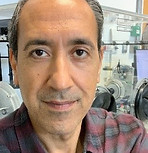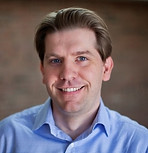Meet the team
Co-Investigators
Prof. David Armstrong
University of Oxford
David's research group work on understanding the behaviour of materials under extreme environments, such as radiation damage, high temperatures or high stresses. By developing an understanding of the mechanical behaviour and defects which control materials behaviour we then try and develop materials better able to operate under extreme conditions. We are now working to take technqiues we have developed for traditional engineering materials and apply them to questions in other areas such as solid state batteries for energy storage and geological materials.
Dr. James Dawson
Newcastle University
James is a Newcastle University Academic Track (NUAcT) Fellow in Energy Materials. His research is focused on understanding and designing energy (storage, conversion and generation) materials for current and next-generation applications to combat climate change and the ever-evolving energy crisis. Specifically, his group employs state-of-the-art atomistic modelling techniques (both classical and quantum mechanical) to improve the structures, interfaces and properties of materials for batteries, photovoltaics and fuel cells.
Prof. Charles Monroe
University of Oxford
Charles is an Associate Professor in the Department of Engineering at the University of Oxford, whose interest focusses on the development and modeling of electrochemical devices for energy storage and conversion. Charles is primarily interested in batteries and fuel cells, which his research group explores through both theoretical and experimental routes.
Prof. Peter Nellist
University of Oxford
Peter's research centres on the applications and development of high-resolution electron microscope techniques, in particular scanning transmission electron microscopy (STEM), including atomic resolution Z-contrast imaging, electron energy-loss spectroscopy and applications of spherical aberration correctors. Our technique development work includes methods for the three-dimensional imaging and spectroscopy of materials, and methods to allow high resolution imaging and spectroscopy of radiation sensitive materials. Always we aim to use microscopy data in a quantitative way to make measurements of the atomic and electronic structure of materials.
Prof. Paul Shearing
University College London
Prof Paul Shearing is the Royal Academy of Engineering Chair in Emerging Battery Technologies for Next Generation Energy Storage, based in Dept. Chemical Engineering at University College London. He is a co-director of the Electrochemical Innovation Lab and from 2012-16 he was a holder of a Royal Academy of Engineering Research Fellowship.
His research interests cover a broad range of electrochemical engineering themes with a particular interest in the relationship between performance and microstructure for energy materials: an area in which he has published more than 190 papers.
He is a pioneer of ‘4-D Tomography’ and has used most of the world's major synchrotron light sources; at UCL he has established a leading facility for multi-scale X-ray imaging.
He leads the UK’s STFC Global Challenge Network in Batteries and Electrochemical Devices, which brings together leading international researchers from industry and academia.
In 2006 he graduated from Birmingham with the top first in Chemical Engineering, and in 2009 he took a PhD from Imperial College. He is the recipient of the Salter’s Graduate Prize and the Janet Watson memorial prize for research excellence. In 2014 he was named the Institute of Chemical Engineers, Young Chemical Engineer of the Year in Academia and in 2016 the RAEng Engineers Trust Young Engineer of the Year.
Dr. Gregory Rees
University of Oxford
Gregory Rees received his B.Sc. (Chemistry, 2007), M.Sc. (Chemistry, 2008) from the University of Warwick. He received his Ph.D. in Physics (Warwick, 2012), focusing on the development of nuclear magnetic resonance (NMR) techniques for catalytic materials. Greg joined Bruker UK Ltd in 2012 as an applications scientist, in 2014 he took up a postdoctoral position in materials solid state NMR back in Warwick (Physics), and in 2018 became a research fellow in the University of Nottingham (Medicine) specializing in multinuclear magnetic resonance imaging (MRI) and its development.
He joined Professor Bruce’s group in February 2019, his research interests include materials solid state NMR and multinuclear MRI. Currently, he is working on developing NMR approaches to analyse battery materials.










